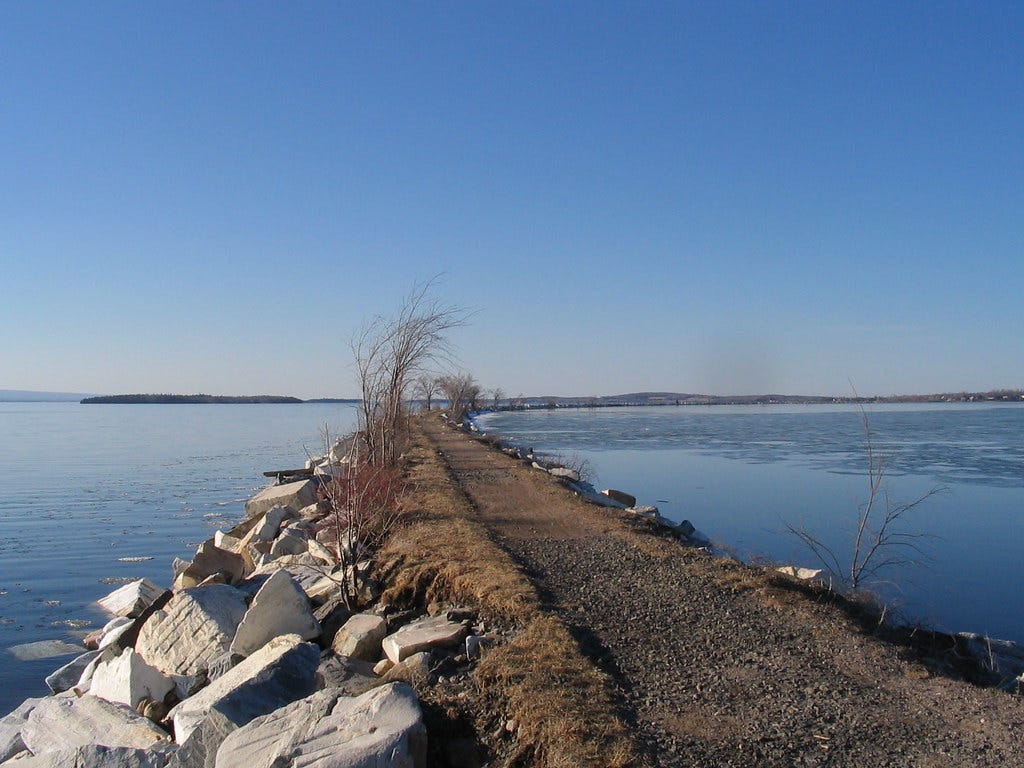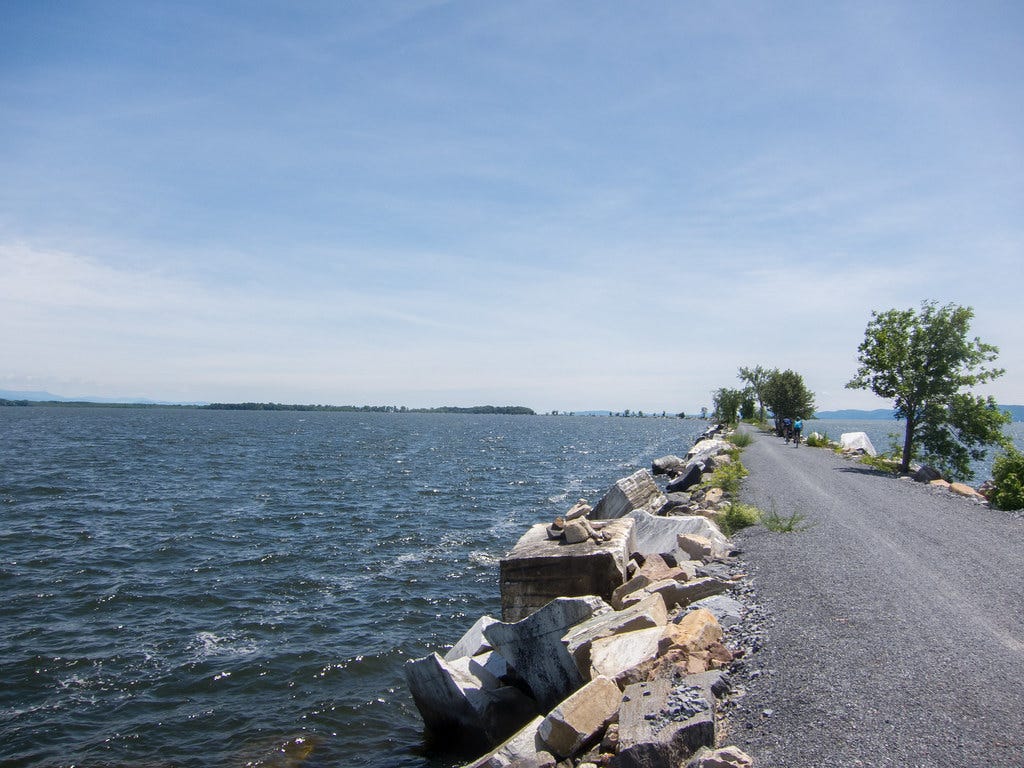Maybe it’s because we just saw House Republicans vote for a budget bill that would cause a lot of austerity for anyone who’s never set foot on a Learjet before, but I’ve been thinking: When was the last time a lot of us received some serious pocket money?
By my estimation, our most recent mass windfall was 2021; Year Two of the COVID-19 pandemic. Amidst all of the viral suffering, mass death, and existential dread, billions of dollars were disbursed to individuals, businesses, and municipalities; with the core intention of keeping society from imploding. Lots of us suddenly qualified for beefier unemployment checks. Properietors could secure thousands in forgiveable loans by simply filling out an online form. And of the American Rescue Plan Act (ARPA), which amounted to $1.9 trillion, around $130 billion was sent to cities and counties. And the range of local programs and projects that this money supported might surprise you.
Consider Lake Williams—one of the bigger water bodies in Marlborough, MA. While the west edge of the lake has a smattering of hardwoods, Lake Williams is ultimately surrounded by busy roads; the kind that you have to sprint across, because there are no crosswalks. Until recently, the only way to traverse the shores of Lake Williams was to show up on a warm day with a pair of wader boots or a snorkel. But this changed in December 2023, when the City of Marlborough unveiled one of its ARPA investments; a 3,000-foot floating boardwalk trail across the rippling blue surface of Lake Williams.
If you’ve ever stepped onto a boardwalk that literally bobs in the waters of a marsh or a pond, then you know what it’s like to hear your soul squeal with childlike glee. Maybe I’m generalizing here, but there’s just something irresistibly fun and improbable about a buoyant path. But usually these water features are seasoning on a land-based trail. It’s much, much rarer to find a trail with a bobbing backbone. And in the case of Lake Williams, the floating boardwalk is actually serving a higher purpose. It’s opening up the lake to circuitous ambling, since each boardwalk end connects to a path through the woods on the lake’s western shores. So when I learned about this hodge-podge of solid and floating trails earlier, I instinctively reached for my keys and tick repellent.
Even at 8am on a breezy April morning, there were signs of life on the Lake Williams boardwalk that hinted at what the floating trail (and the entire lakeshore loop) might look like in the next couple of years. As I giddily arrived at the boardwalk path, I was overlapped by a silver-haired old timer in a tracksuit—the sort of guy you always see perambulating a pond or a lake every morning, who usually has a name like “Thurston Castlemilk.” As more Central Mass. residents learn about the new boardwalk trail, you might soon find yourself passing a squad of these guys. Similarly, as I started walking across the surface of the lake via the floating boardwalk sections, a younger couple approached from the opposite direction. Their faces were stoic and neither of them uttered a word as we passed. It’s another common sighting on lakefront trails, and it sometimes leaves you wondering whether the couple is breaking up, if they’re coming down from the adrenaline of burying a body in the woods, or if they’re just enjoying the silence and the morning mist. The ambiguity of people watching always satisfies me.
But as much as the Lake Williams floating boardwalk trail opens up the lake to more consistent and casual recreation for Marlborough residents, I suspect the real draw here is going to be the sheer joy of walking on top of water. Every so often, you find a trail that allows you to walk through a space where, in theory, walking would be near impossible. In New York’s Van Cortlandt Park, in The Bronx, the John Muir Trail runs between the crush-your-skull traffic of the Mosholu Parkway and the chip-your-skull golfers teeing off at the park golf course. How? By utilizing chainlink fencing on both sides of the trail to form a protected corridor of walking space, between these two territories that aren’t particularly friendly to walkers. The full-body buzz that I felt while sauntering through that fenced corridor last spring is the same sensation that Lake Williams’ boardwalk trail evoked. The thrill of being where you should not be. Safely!
But as cool as walking alongside a hair-raising parkway can be, it’s hard to compete with walking on top of water —when it comes to trails that defy physical reality. The Lake Williams floating boardwalk trail joins an illustrious sub-genre of trails that run across laketops, and one of the more legendary predecessors is actually located in New England as well. The next time you’re up in Burlington, Vermont on a sunny day, consider venturing northward to the nearby town of Colchester, where an old railroad bed arcs across the whitecapped waters of Lake Champlain to South Hero island! While it doesn’t bob in the water, the Colchester Causeway is nearly 3 miles long. And this is why most causeway visitors will bike the gravel path from the mainland to the isle. But if long meditative walks are your bag—and if you don’t mind spending a few hours on a narrow strip of exposed land, on a massive lake—don’t sleep on this one.
As it happens, the Colchester Causeway is now owned by the state, after being largely owned and managed by the Town of Colchester—which became a real problem when unusually strong storms damaged the trail and necessitated expensive repairs. Since the trail connects multiple Vermont communities and is used by thousands of visitors each season, it made sense for Colchester to be relieved of the burdens of keeping the causeway trail safe and accessible. Not only will the state invest more in the trail henceforth, but the causeway is allegedly being branded a state park, which should become official later this year. All of which demonstrates what’s possible when we think about trails as worthy vehicles of public investment, and pony up accordingly.
That might sound obvious. But at a moment when federal health care programs are being bled dry, to pay for yet another round of tax cuts for people with way too much money (and the neuroses to show for it), I can’t help but think about how many trails could be lost—or unrealized—in the years ahead. If you’re mad as hell about what’s happening right now, you will probably feel madder after walking the Lake Williams floating boardwalk trail. When you remember that the funding which made this great trail possible was a brief taste of a more optimistic and opportune America, before the ruling class began clawing everything back; to keep it locked up forever this time.
Still, as damaging as this could be in the short term, I don’t believe for one second that they’ll succeed. Why? Because the Thurston Castlemilks of the world will notice when their local lakefront trail is suddenly cordoned off, because the town ran out of money for maintaining the trail and the feds won’t help. And if the Thurston Castlemilks have one resource on their hands, it’s time—to investigate, pester, harrumph, and raise cane.
That could help. If we’re honest about what it takes to make trails and keep them alive.
Lake Williams floating boardwalk trail
Hike distance: 1.6 miles loop
Elevation gain: 39 feet
CLICK HERE for a trail map
Colchester Causeway
Hike distance: 10.9 miles out-and-back
Elevation gain: 127 feet
CLICK HERE for a trail map
While we’re on the subject of walking adventures, I have something of a cryptic favor to ask you all this week. It’s too early to spill the beans, but I’m currently in talks for a project that would involve walking in a number of U.S. cities later this year and maybe early next year. And I’m trying to map out potential places to sleep during these 2-3 day voyages. In short, I’m on the hunt for any lodging leads (a couch or bed, vacant condo, rusting trailer accruing moss in the yard, you name it) in the following places:
- Pittsburgh
- Miami
- Denver
- San Antonio
- Chicago
Any ideas will be appreciated and investigated! In the meantime, here are a few more stories you might dig, with some thematic parallel’s to this week’s Mind The Moss.
RECOMMENDED READING
- Five Ways to Grow Support for Trails, Walking and Biking (Joseph Reed, Rails To Trails Conservancy)
- "Amid Federal Funding Cuts, Trail Stewards Wonder: “What Are We Actually Doing?” (Nathan Pipenberg, Backpacker)
- Federal funding cuts, layoffs could hinder Appalachian Trail upkeep (Kathryn Carley, Maine News Service)








Thanks for writing about the floating boardwalk -- that is very cool! Also, I think you meant "raise Cain" not "raise cane".
Sounds super cool!